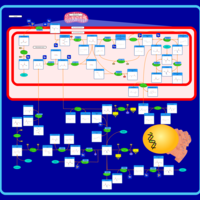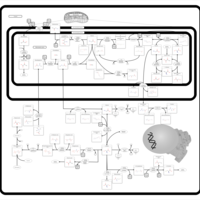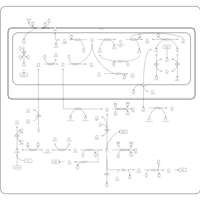| Glycine, serine and threonine metabolism |    |
| Pyruvate metabolism |    |
| Alanine, aspartate and glutamate metabolism |    |
| Nitrogen metabolism |    |
| Citrullinemia Type I |    |
| Carbamoyl Phosphate Synthetase Deficiency |    |
| Argininosuccinic Aciduria |    |
| Cysteine Metabolism |    |
| Glycolysis |    |
| Amino Sugar Metabolism |    |
| Citric Acid Cycle |    |
| Urea Cycle |    |
| Glutamate Metabolism |    |
| Glucose-Alanine Cycle |    |
| Gluconeogenesis |    |
| 2-Hydroxyglutric Aciduria (D And L Form) |    |
| Dihydropyrimidine Dehydrogenase Deficiency (DHPD) |    |
| Leigh Syndrome |    |
| Ornithine Transcarbamylase Deficiency (OTC Deficiency) |    |
| Pyruvate Dehydrogenase Complex Deficiency |    |
| Sialuria or French Type Sialuria |    |
| Non Ketotic Hyperglycinemia |    |
| Salla Disease/Infantile Sialic Acid Storage Disease |    |
| Dimethylglycine Dehydrogenase Deficiency |    |
| 4-Hydroxybutyric Aciduria/Succinic Semialdehyde Dehydrogenase Deficiency |    |
| Sarcosinemia |    |
| Lactic Acidemia |    |
| Pyruvate Decarboxylase E1 Component Deficiency (PDHE1 Deficiency) |    |
| Hyperinsulinism-Hyperammonemia Syndrome |    |
| Pyruvate Carboxylase Deficiency |    |
| Primary Hyperoxaluria Type I |    |
| Argininemia |    |
| Glycogen Storage Disease Type 1A (GSD1A) or Von Gierke Disease |    |
| Homocarnosinosis |    |
| Tay-Sachs Disease |    |
| Pyruvaldehyde Degradation |    |
| Transfer of Acetyl Groups into Mitochondria |    |
| Dimethylglycine Dehydrogenase Deficiency |    |
| Hyperglycinemia, non-ketotic |    |
| Beta-mercaptolactate-cysteine disulfiduria |    |
| Glycogenosis, Type VII. Tarui disease |    |
| G(M2)-Gangliosidosis: Variant B, Tay-sachs disease |    |
| Congenital lactic acidosis |    |
| Fumarase deficiency |    |
| Mitochondrial complex II deficiency |    |
| 2-ketoglutarate dehydrogenase complex deficiency |    |
| Pyruvate dehydrogenase deficiency (E3) |    |
| Pyruvate dehydrogenase deficiency (E2) |    |
| Primary hyperoxaluria II, PH2 |    |
| Pyruvate kinase deficiency |    |
| Phosphoenolpyruvate carboxykinase deficiency 1 (PEPCK1) |    |
| Fructose-1,6-diphosphatase deficiency |    |
| Triosephosphate isomerase |    |
| Succinic semialdehyde dehydrogenase deficiency |    |
| Fanconi-bickel syndrome |    |
| Glycogenosis, Type IB |    |
| Glycogenosis, Type IC |    |
| Glycogenosis, Type IA. Von gierke disease |    |
| Warburg Effect |    |
| 3-Phosphoglycerate dehydrogenase deficiency |    |
| Cystinosis, ocular nonnephropathic |    |
| The oncogenic action of 2-hydroxyglutarate |    |
| The Oncogenic Action of Succinate |    |
| The Oncogenic Action of Fumarate |    |
| Glutaminolysis and Cancer |    |
| The oncogenic action of L-2-hydroxyglutarate in Hydroxygluaricaciduria |    |
| The oncogenic action of D-2-hydroxyglutarate in Hydroxygluaricaciduria |    |